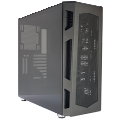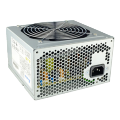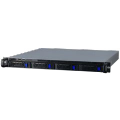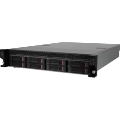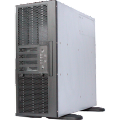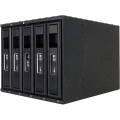CASE STUDY -Rackmount Enclosure Solution for Battery storage power station/ Energy storage power station
we create a robust case for the energy storage field. It provides great protection to the fragile batteries, including thickened case body to prevent penetration, optimized fire stop strategy while keeping the cooling ability, and an anti-corrosion coating to resist the damage from the harsh environment. The enclosure is easy to assemble and maintain, suitable for any battery storage application.
Super storm, unusual flood, record breaking heatwaves, those rare phenomenon in the past have been occurring commonly in recent years. Thousands of people lost their home and government spending on recovery kept rising. We’re facing the severe weather caused by the climate change.
In 2016, 195 country leaders signed the Paris Agreement, promising to reduce the impact of the climate change by controlling the temperature increasement under 2℃ or 1.5℃ to the record before Industrial Revolution by 2030. In this agreement, there’s an important 20/20/20 targets, which meant it must achieve the reduction of carbon dioxide (CO2) emissions by 20%, the increasement of renewable energy's market share to 20%, and a 20% increasement in energy efficiency. This important target has then become the central principle in many countries’ carbon emission reduction policy.
Though the target seemed easy to achieve, there are challenges when realizing. Most challenges come from the nature limitation of the renewable power source. To solve it, a new energy system must be introduced in.
Challenge of the renewable power
The popular renewable energy source nowadays includes hydraulic, wind, solar and geothermal power. Among the options, the hydraulic power and geothermal power are the most stable choice, and both have been widely established for years. Some are even the main power generating utilities in some area, such as the hydraulic power plant near the Niagara Falls. However, the sites are restricted. Not every place is suitable to build the hydraulic or geothermal power station. They both need special geometric condition. Sometimes, it may have severe environmental problems like the hazardous gas leakage, especially for the geothermal power plant. It is not practical to raise the green energy share by building hydraulic power and geothermal power plants.
Fortunately, with the power generating efficiency improved, wind and solar power became a worth-considering solution.
The wind and solar power have the following benefits. First, they are sizable. People can buy the suitable power generator set based on the space they want to install. This important feature gives the wind and the solar power the flexibility. Second, the site requirement is not high compared to other energy source. Because the sunshine and the wind are so easy to access, the wind turbine and the sun power panel can be set at almost every place. Wrong place only limits their efficiency. Last, they are affordable. With the mature of the fabrication and design, the cost of each set drops quickly. Take small generator sets for example. Even normal household can afford it. Having the benefits, the wind and solar power spread widely and quickly. They turn to be the main substitutional energy every policy maker considers.
However, the challenges come after. The efficiency of wind and the solar energy are easily affected by the weather and the time. The power output is not stable. If we directly link the renewable power station into the power grid, the instability will increase the burden of the power system. In worst case, it may cause massive blackout. Therefore, it is essential to have advanced power management system to help regulate the power generation between traditional power plant (nuclear, fire or gas) and the renewable energy.
Most of the time, only the power management system is not enough. Due to the design, the solar and wind power plants are lack of the protection and are more fragile than the tradition power plants. The sudden incident may cause the unrecoverable power drop and destroy the system. To further stabilize the power output and prevent the fluctuation of the power system, the energy storage system must be taken into consideration.
Role of the energy storage system
The energy storage system works just like a huge capacity. It can storage the overdue power when the renewable energy generator run in peak while the power demand is supplied by the traditional power plants. When the power demand comes in cloudy or no wind weather, or in night, the energy storage system can release the power it saved before to fill the demand. By this way, the power harvested by the renewable power harvesters can be fully used. No energy will waste because of the over generating. The traditional power plant can also work less, reducing the carbon emission. At this viewpoint, we can say the energy storage system plays the key role in the renewable energy industry.
Interestingly, the energy storage system doesn’t work just like a huge capacity, itself is the cluster of a bunch of batteries. To fix and protect the fragile batteries, a multiple layer structure was proposed. It aims to prevent the fire safety risks. In nowadays energy storage station, it consists of at least 4 layers from bottom to top: the batteries, the battery modules, the module racks, and a container.
Two main energy storage solution
To understand the consideration behind the multilayer structure, we must first understand the battery. The batteries in energy storage station can be divided into two main group: one is the lithium-ion based battery and the other one is the hydrogen fuel cell.
The hydrogen fuel cell uses hydrogen as its main fuel as it names. It generates energy when the hydrogen ion react with the oxygen and its only product is water. Though the whole process is clean, it is hard to be popularized. The main challenge comes from the high cost of the transport facilities and the storage facilities. Because hydrogen is highly active, it will need higher energy to isolate the hydrogen. The requirement of electrolyzing electrode is also high. It must use platinum as the catalyst. To further prevent the leakage and accident, air-proof and fire safe facilities has also need to be considered in the transport and the storage facilities. All these requirements increase the difficulties to commercialize the hydrogen fuel cell energy storage solution.
On the contrary, the lithium-ion based battery energy storage solution is more accessible. First, the lithium-ion battery has been widely adopted in the electronic devices, from mobile phone to the electric car. Most issues are known and preventable. As the characteristics of the lithium-ion battery is fully understood, it is a reliable choice for the energy storage. Second, the cost is competitive. Compared to other energy storage solution, the price of the lithium-ion battery is cheaper. The price drops quickly by year with the increasing adoption of the lithium-ion battery. It may be the key reason that makes the lithium-ion battery solution so appealing. Last, it is easy to transport the lithium-ion batteries. This is especially important because no extra cost or facilities will be required to storage the batteries when transporting to the site. The whole building progress can be totally controlled. Based on these reasons, applying the lithium-ion battery in energy storage field is an unstoppable trend.
Challenge on the case design
Thought lithium-ion battery is a convenient and budget choice for building the energy storage station, it has few fetal issues.
First, it can’t withhold the high temperature. In high temperature, a chain reaction inside the battery will be triggered and cause the “thermal runaway”, which means the heat accumulation is quick and uncontrollable, leading to fire and even explosion. Therefore, it is important to keep the batteries under the threshold temperature which is 60℃. A function-well heat dissipating design will be essential.
Second, it fears the penetration. The lithium-ion battery is form of stacks of anodes and cathodes which are isolated by a thin film insulator. The penetration will break the isolation film and cause massive short which will trigger the chain reaction and induce fire and explosion. How to find an effective way to prevent penetration becomes a critical factor on enclosure design.
Last, it can’t be operated in corrosive environment. The battery is fragile when it is exposed to the salty environment. The conductive salt solution will cause over-discharge and raise the risk of the thermal runaway accident. To protect the batteries from the corrosive environment is the key for the energy storage station, especially when most green energy harvester facilities are near the seashore. Considering above issues, the case must have the abilities to stop the fire, thick enough to prevent penetration, and anti-corrosion in harsh environment.
Case solution for the battery enclosure
To answer to the requirement of the battery enclosure, we introduced few important designs.
The temperature control is the first thing we need to consider. It is not easy to stop the fire and maintain the airflow at the same time. The fire may be induced from inside and may also come from outside by other accident or neighbor module. The best way is to reduce the openings as many as possible. Whereas, the deducted opening may lead to the insufficient air flow. To solve the dilemma, we decided to place the opening on the farthest side from the batteries. The openings are set follow the newest IEC-62368-1 standard to prevent the fire outbreak and we place as many as possible to ensure the sufficient cooling air. By this way, we can keep the battery module safe from the fire threat and provide a cool environment for the batteries.
The penetration issue is critical. Unlike the fire safety problem which can solve by reducing the openings, the penetration is hard to predict. It may come from any side. The most effective way is to adopt the strategy applied on military vehicles: increasing the sheet thickness of the enclosure. However, the thickened metal raises the fabrication difficulties. The strengthened enclosure will be also too heavy to transport and move. This design will become a burden to both the fabrication and the maintenance. We have to find the balance between the protection and the production. Learned from the study of the past project, we find the solution. For the main body of the enclosure, which structure is simple, we use thick sheet to increase the protection. For other complex parts like battery cages, we use thinner sheet to reduce the production difficulties. By this way, a sturdy and anti-penetration enclosure can be realized.
About the anti-corrosion issue, it is straightforward. In normal condition, the batteries are well sealed. In the meanwhile, the battery modules are normally installed inside a container which equip with air conditioner. The risk of exposure to corrosive air is low for batteries and the enclosures. By applying adequate paint on the case and inside the case, the corrosion problem can easily be solved.
Realization of the battery enclosure
Besides adopting the solution to protect the batteries, we add additional thinking when realizing the case.
Easy assembling is the first thing coming to our mind. We adopt the experience we applied when we design the server case and the pc case. All the internal parts can be easily fixed in a comfortable way without obstacles. To fix the batteries firmly, we designed a simple but robust battery holder. The batteries can stand well and resist the shock when falling. The holder can also function as the support to the case body, so the case can keep its shape in long turn usage.
We also simplify the structure. Because the sheet is thick, we reduce the internal parts as less as possible. The total weight of the case and the batteries can be in the range a worker can hold. The simplified design allows the enclosure to be produced quickly and provided in reasonable price. The maintenance becomes easy, too. You can dissemble and assemble the case with only a screwdriver. These measures make the enclosure suitable for the energy storage tasks.
In summary, we create a robust case for the energy storage field. It provides great protection to the fragile batteries, including thickened case body to prevent penetration, optimized fire stop strategy while keeping the cooling ability, and an anti-corrosion coating to resist the damage from the harsh environment. The enclosure is easy to assemble and maintain, suitable for any battery storage application.


